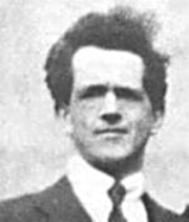Nationality Irish Other names Paddy Moran Role Green grocer | Name Patrick Moran Occupation grocer's assistant | |
 | ||
Born 14 March 1888 Crossna, Co. Roscommon Died March 14, 1921, Mountjoy Prison, Dublin, Republic of Ireland | ||
Patrick Moran (14 March 1888 – 14 March 1921) was a grocer's assistant, trade unionist and member of the Irish Republican Army executed in Mountjoy Prison along with five other men on 14 March 1921. He is one of the Forgotten Ten.
Contents
Background
Moran was born in Crossna, County Roscommon. He was the third of eleven children of Bartholemew and Brigid Moran, and attended primary school in Crossna before going to work as a grocer's assistant in Boyle. In 1911 he settled in Dublin.
An active member of the G.A.A., he was involved in the 1913 Dublin Lock-out. He was a member of the Irish Republican Brotherhood and the Irish Volunteers. As Adjutant of D Company, 2nd Battalion of the Dublin section of the Volunteers he fought in the Jacob's Factory Garrison during the Easter Rising of 1916 under Thomas MacDonagh. In the aftermath of the Rising he was imprisoned at Knutsford Prison and later at Frongoch. He was tried in Wormwood Scrubs and released in July 1916.
In 1917, he was a founder of the Irish National Union of Vintners, Grocers and Allied Trades Assistants. He went on to serve as the organisation's president and chairman of its Kingstown branch.
Arrest and detention
After his release from internment he became a captain in 'D' Company of the 2nd Battalion, Dublin Brigade, IRA. He was arrested on one occasion in 1920 during a strike for better conditions for members of his union and was imprisoned in Mountjoy for two weeks when he refused to take bail as he said he had done no wrong. He was arrested at his place of work on the Friday after Bloody Sunday (1920) and taken to the Bridewell Station. He was transferred two weeks later to Arbour Hill.
While in detention at Arbour Hill Prison, he was subjected to a number of identity parades and identified as being the man who had held up a motor cyclist outside 38 Mount Street, Dublin where Lieutenant Ames, a suspected intelligence officer was killed. He strongly protested his innocence of involvement in that incident on Bloody Sunday. He claimed he was at Mass in Blackrock (over four miles from the scene of the shooting) at the time. Several witnesses supported this alibi evidence but it was false. However, witnesses including a church rector, attested that the claim by soldier witnesses to have known the time by the chiming of the church bell revealed that the bell had not chimed for years.
Conviction and execution
He was transferred from Arbour Hill to Kilmainham Jail and incarcerated in what was known as the "Murderers' Gallery", two cells away from Ernie O'Malley, with whom he became good friends. On 14 February 1921, Moran, O'Malley and Frank Teeling broke through the padlock of an outer gate of the prison. However, Moran refused to take the opportunity to escape as he reportedly felt the authorities would interpret it as an admission of guilt, telling O'Malley "I don't want to let down the witnesses who gave evidence for me."
Moran started a concert to distract the guards while the men escaped, with Simon Donnelly taking Moran's place. The event is related in detail in O'Malley's memoir On Another Man's Wound. He was tried the day following the break out in City Hall, Dame Street, Dublin. Moran was convicted of murder three days later and sentenced to be hanged on 14 March 1921. Moran and Thomas Whelan were tried for murder; Francis Flood, Thomas Bryan, Patrick Doyle and Bernard Ryan for high treason. They were all convicted and sentenced to death. The Archbishop of Dublin spoke out against the sentence.
The Irish National Union of Vintners' Grocers' & Allied Trades' Assistants, of which Moran had been an active member, called a half-day general strike on the morning of the executions and over 40,000 people gathered outside Mountjoy to pray for the six men who were hanged between 6am and 8pm. The townships of Bray, Dún Laoghaire, and Blackrock closed down, with the municipal flags flying at half-mast, on the day of his hanging, with Mass celebrated in all churches every hour from 6am to noon. All post office branches throughout Ireland stopped work.
Aftermath and reinterment
In 1961, a park was opened in Moran's memory in Dún Laoghaire In May 2012, the park was closed to the public as work commenced on the removal of the bowling green, and the construction of a library and cultural centre. In 2001 he and the other nine executed men ("the Forgotten Ten") were exhumed from their graves in the prison and given a full State Funeral. He is now buried in Glasnevin Cemetery, Dublin.
